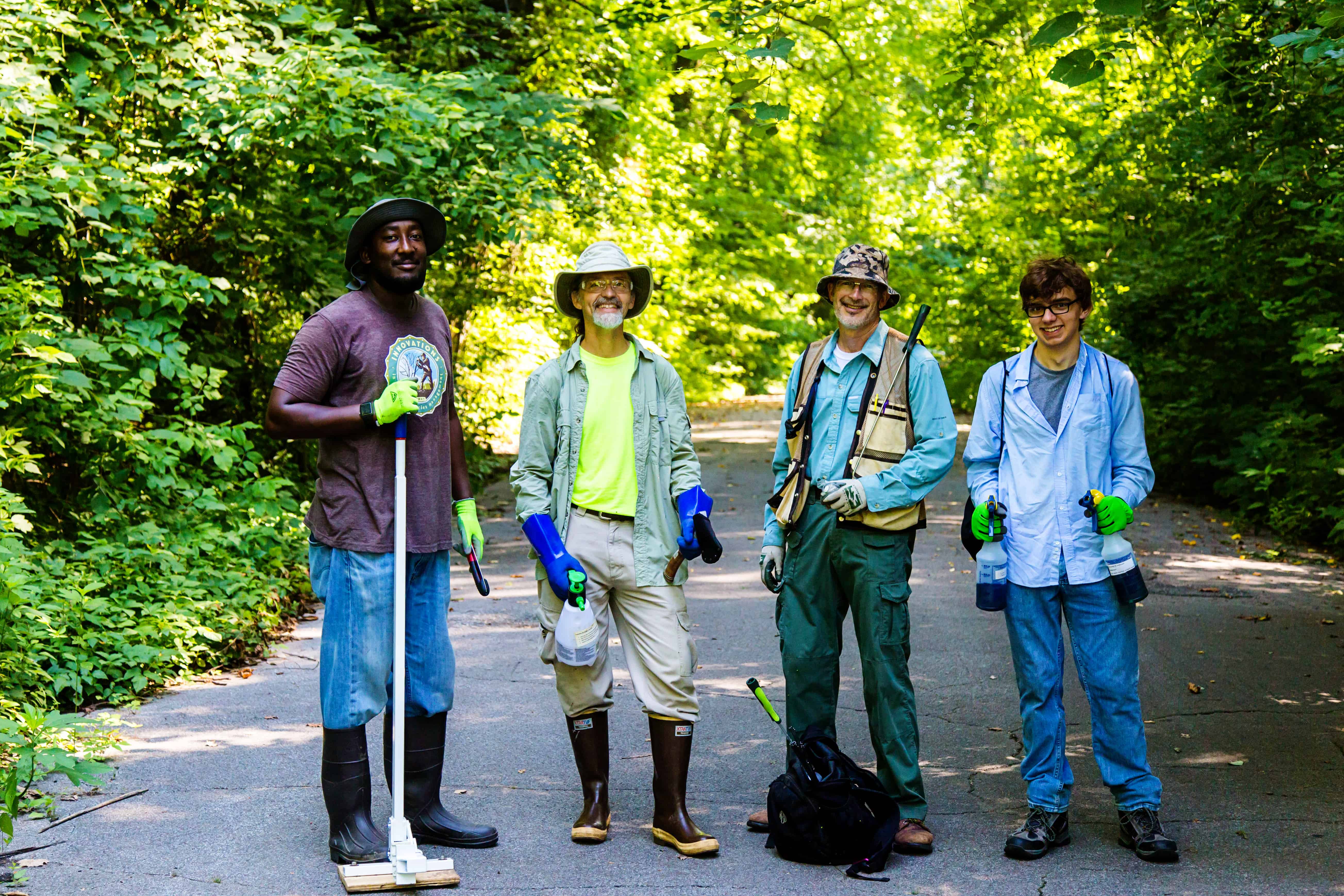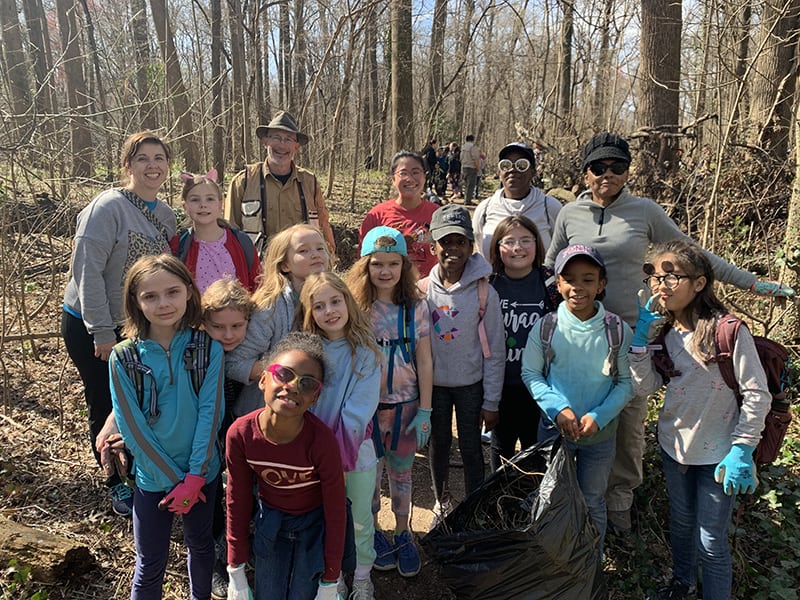Invasive plants are no match for volunteer Bill Bullock

After 35 years working at MLGW, Bill Bullock was ready to spend time giving back. Over the past three years, Overton Park has been the recipient of untold hours of Bill’s time and energy–and the Old Forest is much better off for it.
Bill’s journey to combating invasive plants in the park began with volunteer work in Kennedy Park, where he helped Wolf River Conservancy replant two electric transmission rights-of-way. Typically, in utility rights-of-way, crews spray herbicide or mow regularly to keep trees from growing up into power lines. But Bill learned that by planting clumping native grasses and interspersing native wildflowers, the project could save maintenance costs for the utility, create habitat, and provide a filter to reduce water runoff.
Bill brought his growing knowledge of native plants to Overton Park Conservancy in 2017, asking the staff to put him to work. He’s long felt connected to the park through his mother, who spent her last few years at the Parkview and could often be seen with a backpack and binoculars, enjoying the birds in the forest.
Bill’s commitment to forest stewardship was quickly obvious, and the Conservancy invested in training for him. With Director of Operations Eric Bridges and Operations Manager Andrew Weda, Bill attends an annual conference on invasive plant management. He’s also become state-certified in the application of herbicide, so that “for the few times we need to use it, on things like larger shrubs that can’t be pulled completely out of the ground, I know what I’m doing.”
Fridays are designated invasive-removal days, and Bill often shows up with a small crew to help attack shrubby plants like nandina and bush honeysuckle.
This winter, Bill convened five volunteer work days, which recalled the privet pulls he’d been part of in the park years ago. “The Conservancy staff is small and weekends are precious. This year I felt like I had the knowledge to lead events on my own.” He developed a strategy to focus on a specific area of the forest and remove multiple species, instead of fanning out and focusing on one plant. Over five weekends of nice weather and strong enthusiasm, crews started at East Parkway Pavilion and worked their way down the limestone loop in both directions, taking out as many invasive species as they could.

Working with Eric and Andrew has taught Bill a lot about the forest, and he’s enjoyed being part of some of the many research efforts being conducted in the woods. “It’s not just learning what plant is what. A lot of it is learning what’s happening in the forest, what’s changed, and what are the reasons for those changes. The learning curve is still pretty steep, but to me that’s satisfying–to be able to continue to get better.”
If Bill has taken one thing from his work at the park, it’s that “it’s a pretty rare thing to have a forest like this in the middle of a city. We’ve seen the impact on the forest of the development all around it, and of the non-native plants that grow so well and look so nice, but that have no natural enemies in our region. They get loose in the park and begin to change the character of our old-growth forest. Each of us can positively impact that environment by cultivating native plants and helping nature rebound.”
Bill recommends Doug Tallamy’s book “Bringing Nature Home: How You Can Sustain Wildlife with Native Plants.”



